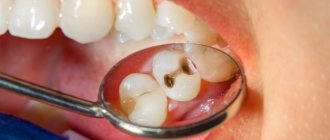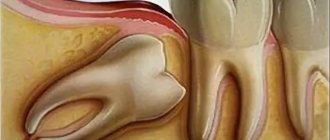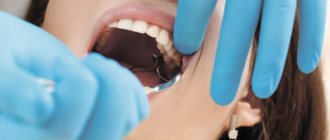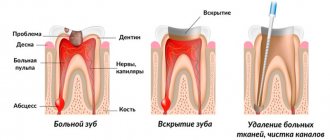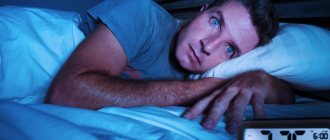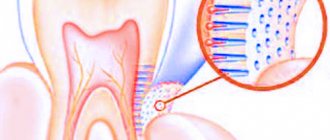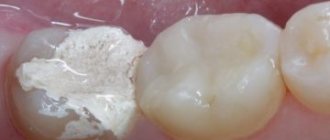With the development of caries or a number of other dental diseases, the patient begins to suffer severe pain, which is difficult to relieve with the help of ordinary rinses with soda or salt. For some reasons, patients cannot get an appointment with a dentist right away, so it is important to take a good pain reliever right away. Since it is not always possible to take pills due to contraindications, you can use ointments to relieve pain in your teeth. Listed below are the most effective and truly helpful products in this category. But no matter how well they help the patient, it is necessary to visit the doctor's office as soon as possible.
The best ointments for toothache
Cholisal for pain relief
The medication has anti-inflammatory and antibacterial effects. It quickly penetrates the tissue and reaches the site of inflammation, which reduces pain within the first few minutes after application. Due to its non-hormonal nature, it can be used at any age. Apply the ointment only topically, and it is advisable to do this immediately before meals. For treatment, first squeeze a 0.5-2 cm long strip of Cholisal onto your finger. The substance is gently rubbed around the diseased tooth into the gum and over its surface. Repeat such manipulations no more than three times a day.
Cholisal has anti-inflammatory and antibacterial effects
Attention! The medicine contains anise oil, which can provoke an allergic reaction. Before use, it will be useful to apply a small amount of ointment to any part of the body. If after an hour there are no particular unpleasant sensations, you can relieve toothache with Cholisal.
Possible side effects
We figured out how to use Lidocaine spray, and now we’ll find out what side effects the drug can cause. So, after applying the product, the patient may experience local negative reactions such as burning, redness of the mucous membrane or skin. As a rule, such manifestations disappear on their own immediately after the onset of the analgesic effect. There is also a risk of developing allergies, which can manifest as itching and rashes. In extremely rare situations, anaphylactic shock occurs.
Some anxiety is likely to appear as a reaction of the nervous system. In some cases, the drug leads to a decrease in heart rate or blood pressure. To decide whether it is possible to use Lidocaine anesthesia for dental anesthesia in relation to a particular patient, the doctor must first make sure that he has no contraindications to the use of the drug.
Periodonticide for tooth pain
This ointment is also often used to suppress pain due to the development of caries that has reached the nerve. Also, Parodontocide will perfectly relieve discomfort due to wearing implants, braces and other dental structures. The gel can be applied in two ways. One of them is the classic version, in which you simply rub 1 cm of the medication into the affected tooth. You can repeat the manipulations three times during the day.
Periodontocide is used to suppress pain during the development of caries that has reached the nerve
According to the second option, it is allowed to make special compresses. To do this, apply 1 cm of the active substance to sterile gauze and apply it to the sore spot for 15 minutes. When using Periodontocide in this way, there may be a slight burning sensation. Applications can also be used three times a day.
Attention! The medicine contains a large number of herbal components. But due to the fact that most of them are esters, Parodontocide is not used during pregnancy. Before applying, you should make sure that you are not allergic to at least one component in the composition, so as not to provoke swelling.
Video about Parodontotsid ointment
How to dispense in pharmacies and storage rules
The drug can be used for 5 years from the date of release. The bottle should be kept in a place protected from direct sunlight, where children cannot get into. Recommended storage temperature varies between 15-25 degrees above zero. The estimated cost of the drug in Moscow ranges from 350 to 380 rubles. "Lidocaine" is dispensed only with a prescription from a doctor, which excludes the possibility of its independent use without prior consultation with a specialist.
Tetracycline for toothache relief
Tetracycline ointment
Tetracycline ointment is an antibiotic. It is most often used to treat eye diseases or skin lesions. But if you need quick pain relief, it can also be used on your teeth. To do this, apply a small amount of ointment to the affected area. For one-time use, one small pea of the drug is enough. When using Tetracycline, it is better to place it on a sterile gauze pad, which is placed over the sore spot. Repeat such manipulations up to 3 times a day. Do not hold the tampon with ointment for more than 10 minutes.
Attention! Since the drug is an antibiotic, there are a large number of contraindications for its use, including for problems with the liver and kidneys. Before starting therapy, it is better to become familiar with the full list of possible contraindications, so as not to provoke a relapse of chronic diseases.
How can you replace Lidocaine spray?
Many people are interested in whether there are analogues of Lidocaine and how it can be replaced. In fact, there are quite a lot of drugs with similar effects, but it is difficult to answer the question of which is better than the drug in question. “Lidocaine” is rightfully considered one of the most effective and proven anesthetics, and that is why dentists most often prefer it.
As an alternative, you can consider drugs such as Lidocaine Vial or Xylocaine. Both are available in the form of a spray for external use and are characterized by a rapid onset of effect, as well as a relatively long-lasting and sustainable effect. You can also pay attention to similar drugs in gel form - “Xycain” and “Xylocain”. Remember: you can start taking any medications only after the attending physician gives his consent. Otherwise, there is a risk of causing serious complications.
Carmolis Phytogel against toothache
The drug is distinguished by its naturalness and good tolerability among patients of all groups, including during the eruption of baby teeth. Carmolis Fitogel should be applied every 4-6 hours, but the daily number of uses cannot exceed 3 times.
Carmolis Fitogel is distinguished by its naturalness and good tolerability
For treatment, you need to squeeze out a little ointment, its amount is approximately 1-3 cm. The stronger the pain, the more product you need to use. When treating children, the dosage of 2 cm of Carmolis should not be exceeded.
When using this product, you can get a noticeable analgesic effect, and there is also a cooling and softening effect. The gel allows you to reduce discomfort within 2-5 minutes after treatment.
The drug has a significant cooling and softening effect, due to which relief comes within the first minutes after using Carmolis.
Attention! Due to the propolis and plant esters contained in the medication, there is a high probability of an allergic reaction in the form of severe swelling of the mucous membrane. If you are not sure of the complete tolerability of all components or the patient is hypersensitive to some components, it is better to choose a different ointment.
Mode of application
A sachet of medicine is diluted with 100-150 ml of water. You need to take the prepared solution after meals. Keeping the time interval between doses of about 12 hours. It acts almost instantly, after 20-30 minutes, due to the fact that the aqueous suspension solution is immediately absorbed into the gastric mucosa without disturbing its natural barrier.
Dosage and method of administration
The prepared solution cannot be stored. Before each use, a new one is prepared.
The powder is diluted in a glass of water
When taking it, you must strictly follow the proportions indicated in the instructions or given by your doctor. Consuming more Nimesil or reducing the interval between doses often leads to side symptoms.
Argosulfan against toothache
Argosulfan is antibacterial, so it has a fairly powerful effect
This drug is also antibacterial, therefore it has a rather powerful effect not only on the diseased tooth and gum itself, but also on the entire body. It should be used only in exceptional cases when nothing else is simply at hand. The ointment must be used in the form of an application. To do this, squeeze out 0.5-1 cm of ointment onto a sterile swab, which is applied to the sore spot for 10-20 minutes. Such compresses can be used only twice a day for 3-4 days. Do not use to treat children and elderly patients over 65 years of age.
Attention! Since this ointment is a fairly strong antibiotic that can be used to heal bedsores and ulcers on the body, you should not thoughtlessly apply it to your teeth. It is intended exclusively for local use and, if ingested, can cause poisoning and problems with the gastrointestinal tract.
In what forms is the drug produced, components
Today, the drug is produced in 3 forms: in ampoules - an injection for the tooth, in the form of a gel with Lidocaine and a spray for the teeth. Further in this article we will concentrate on considering the spray, which is a colorless liquid, but with a pleasant menthol scent. The main active ingredient is the anesthetic of the same name - its concentration in a solution of 3.8 g (one bottle) is 4.8 mg. The composition of the drug also includes the following substances:
- propylene glycol,
- mint oil,
- ethanol solution – 96%.
A standard bottle holds approximately 650 doses. The kit includes a glass jar with a dispenser, a spray bottle and instructions for using the product.
Nise for the treatment of carious teeth and gums
Nise gel quickly relieves swelling, reduces pressure on the diseased area, and provokes the regeneration of all tissues
Anti-inflammatory ointment of a non-hormonal nature, which quickly relieves swelling, reduces pressure on the diseased area, and provokes the regeneration of all tissues. To eliminate pain, you need to squeeze out no more than 1 g of ointment onto a small piece of sterile material; this is the size of a small pea. Having slightly distributed the active substance throughout the compress, it is applied to the sore spot. For a better effect, you can capture a few adjacent areas, especially with spreading swelling due to severe pain or purulent inflammation. Such applications can also be done 1-2 times a day for 3-4 days. The duration of the procedure is approximately 10-20 minutes.
Attention! Like most ointments for topical use, Nise does not involve applying it to the sore tooth. If possible, the drug should be replaced with tablets or powder with the same name or an analogue. They have a faster effect, and only in rare cases provoke allergies or intestinal disorders.
Video about the drug Nise
Pharmacology and pharmacokinetics - highlights
The active component of the spray effectively reduces the susceptibility of nerve endings, and this happens by blocking the conduction of the corresponding impulses. Acting systemically, the substance also provides an effect similar to that of antiarrhythmic drugs, but its use for therapeutic purposes does not in any way affect the functioning of the heart. If Lidocaine is sprayed near the respiratory tract, it also prevents coughing and gagging.
The drug also prevents coughing and vomiting.
The drug is quickly absorbed, and if a small amount of the drug enters the gastrointestinal tract, the active component is inactivated. The action occurs within 5-10 minutes. Metabilized in the liver by 90-95%.
Traumeel S against discomfort
Traumeel C gel
The medication is mostly used to suppress pain due to bumps, sprains and bruises. But, if there is no other remedy at hand, Traumeel can be used to relieve discomfort due to diseased teeth, but only for a short time. To do this, apply 1 cm of gel using a bandage or directly onto the sore gum and tooth and gently rub it into the affected area. The ointment may sting slightly for a while, but the discomfort should not be significant. If it lasts more than 5-7 minutes, it is better to rinse your mouth to prevent the development of an allergic reaction in the form of swelling of the oral mucosa or larynx. You should not apply the ointment more than twice during the day. Treatment should not be continued for more than 3 days. If an application is used, it must be kept on the affected area for no more than 20 minutes.
Attention! Traumeel is classified as a homeopathic medicine, which allows it to be used by virtually all patients. But since it is designed to suppress other types of pain and is not intended for application to mucous membranes, the ointment should not be used to treat patients with hypersensitivity, children and elderly patients over 65 years of age.
In what situations is Lidocaine in spray form contraindicated?
There is a list of contraindications to the use of the anesthetic in question. Such pathological phenomena include the following conditions:
- intolerance to the active substance,
- allergy to anesthetic,
- if the patient has had seizures in the past as a result of taking any form of lidocaine,
- frequent fainting,
- bradycardia,
- weak sinus node
- some pathologies of the heart and blood vessels.
The drug is not used when taking impressions of teeth.
Also, the spray is not used when taking impressions of teeth - the risk of penetration of the material into the respiratory system is too great. Before using the product, the specialist must make sure that the patient has no contraindications.
Cost of ointments against toothache
| A drug | Image | Price in Russia | Price in Belarus | Price in Ukraine |
| Holisal | 300 | 10 | 123 | |
| Periodonticide | 200 | 7 | 82 | |
| Tetracycline | 100 | 3,2 | 41 | |
| Carmolis Fitogel | 600 | 19 | 246 | |
| Argosulfan | 400 | 13 | 164 | |
| Nise | 200 | 7 | 82 | |
| Traumeel S | 500 | 16 | 205 |
Attention! All prices are presented in national currency. Taking into account markups from pharmacies and a specific manufacturing plant, the cost of a medicine may differ by 5-20%.
Analogs
Despite all its advantages, the powder has one disadvantage - its high price. Therefore, analogs of the drug regularly appear on the market at a lower cost. They differ in the percentage of nimesulide, price and manufacturer. But the effect of their use may not be as positive and stable as that of Nimesil. Only a doctor can select the correct dosage of similar drugs.
"Nimulid"
On the modern Russian market there are only 4 drugs in powder form: Nimesil, Nimesulide (produced in Russia, Israel and Macedonia), Nimulid (producing country - India. Recently, supplies of powder to Russia have decreased significantly. In Basically, on the shelves of pharmacies you can find tablets and suspensions, as well as Nemulex (manufactured in Russia).
"Nemulex"
Table. Analogues in which the main active ingredient is similar in its actions to Nimesil.
| Analogs | Price | Manufacturer country |
| "Aponil" | Tablets - 150-200 rubles. | Cyprus |
| "Nise" | Tablets - 180-200 rubles. | India |
| "Nimid" | Suspension - 550-600 rub. | India |
Acupressure to relieve toothache
General recommendations when using dental ointments
To get a quick result from therapy that will last a long time, you should follow a number of recommendations:
- before using the ointment, you need to rinse your mouth or brush your teeth;
- applying any of the described ointments is required only with clean hands;
- you should not apply a large amount of medication, as this can ultimately lead to increased swelling of the tissue, which will only increase the pain;
- for treatment, you should choose only non-steroidal drugs, as they are as safe as possible and do not require serious medical supervision;
- if topical ointments, especially antibiotics, are used to suppress discomfort, it is necessary to take prebiotics that can protect the gastric mucosa;
- be sure to adhere to proper nutrition during such a period, since foods with sugar, carbonated drinks, large amounts of nuts and solid foods will only aggravate the patient’s condition.
Attention! If any of the remedies you have chosen does not show results within the first 24 hours, or if the effectiveness appears only for a short time, you should seek help from a dentist. The cause may be due not only to tooth decay due to caries, but also to more serious problems, including cysts and granulomas.
Video - What to do if your tooth hurts?
Before using any of these medications, you must carefully read the instructions. Even with the natural composition of the ointment, it may be harmful for a particular patient due to the individual characteristics of the body. This will avoid many side effects and prevent the patient’s condition from worsening due to complications with the affected tooth. Information on how to extract a baby tooth for a child at home is available here.
Contraindications
The anesthetic drug has an impressive list of contraindications, so before use you should familiarize yourself with them in order to avoid an allergic reaction of the body and deterioration of health.
Among the main restrictions:
- age factor (the drug is recommended for children starting from one year);
- bronchial diseases;
- presence of aspirin-induced asthma;
- any digestive tract disorders;
- peptic ulcers of the stomach, intestines;
- blood problems (leukemia, anemia);
- disorders of the kidneys and liver;
- allergy to the constituent substances of the product.
General anesthesia
General anesthesia is rarely used in dental practice. And only in those clinics where there is a full-time position of an anesthesiologist and the equipment necessary to “give” anesthesia to the patient and in case of emergency resuscitation, which may be required in case of complications.
Most often, general anesthesia is indicated for people who have a panic fear of dentists, as well as for complex long-term operations - multiple implantations, correction of the so-called cleft palate, etc.
General anesthesia according to the “delivery” method
- inhalation - a vaporous anesthetic or narcotic gas is inhaled through the nose using a special mask;
- non-inhalation – intravenous administration of the drug.
Sometimes these two types are combined. For example, with extensive facial surgery.
The main disadvantages of general anesthesia are a large number of contraindications and a high probability of complications.
Inhalation anesthesia: 1. Inhale, the valve is open. 2. Exhale, valve closed
Complications
The most common complications after local anesthesia:
- soft tissue injury - while the anesthetic is still in effect, you need to be careful not to accidentally bite your lip, cheek, or tongue;
- bruise - hematomas occur if the needle touches a vessel during an injection.
Other complications include spasms of the masticatory muscles (when injured by a needle), allergies to painkillers, and temporary loss of sensitivity in the facial muscles. Even less often, the needle breaks off, and in isolated cases, infection occurs.
It is worth noting that complications from local anesthesia are extremely rare. This is the safest and simplest type of pain relief.
But complications from general anesthesia occur more often:
- nausea;
- vomit;
- fainting, collapse;
- inappropriate behavior.
The most dangerous consequences are disruption of respiratory and cardiac activity, which can result in death without resuscitation measures.
What problems does the drug solve?
Nurofen is a drug from the British corporation Reckitt Benckiser (RB). It is effective not only for toothache of various etiologies, but also for increased general body temperature, headaches, muscle, joint, menstrual, and rheumatic pain. It helps fight fever during flu or ARVI. As for toothache, it is able to temporarily eliminate discomfort resulting from the following pathologies:
- caries and pulpitis,
- periodontitis: the drug can reduce the sensitivity of the gums,
- tooth extraction, especially complex,
- teething in children (in primary and permanent dentition),
- eruption of wisdom teeth,
- any surgical intervention: treatment of cysts, fistulas, granulomas,
- after removal of the tooth pulp,
- after the whitening procedure,
- after dental implantation during the rehabilitation period,
- after installing braces, if the device rubs the mucous membranes.
The drug helps with various types of pain
Interesting!
In 2011, a terrible and at the same time curious incident happened to Nurofen in the UK. The fact is that some vigilant buyers, after opening the usual packages, found tablets inside that were different in shape and color. Research has shown that instead of antipyretics and painkillers, there were potent psychotropic drugs for schizophrenia inside. But a thorough investigation made it clear: the pharmaceutical company was not to blame; the substitution took place outside the factory gates. The British media still suspect that this is the work of animal rights activists, who thereby expressed a clear protest against new drugs being tested on cute, unintelligent creatures.
